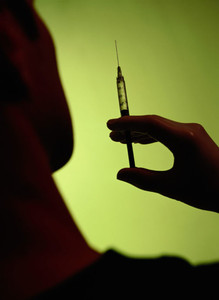The rapidly ageing population in Japan has led the government to promote the use of generics in the universal health insurance system. This article provides an overview of the regulatory approaches available to confirm the quality of generics and achieve greater acceptance of these products by patients [1].
Approaches to assure quality and improve patient perceptions of generics in Japan
Generics/Research
|
Posted 28/04/2017
 0
Post your comment
0
Post your comment

The Ministry of Health, Labour, and Welfare (MHLW) has been providing multi-year programmes that promote the use of generics since 2007. This has included measures for their stable supply, assurance of quality, provision of product information, and increasing incentives for pharmacies. This has resulted in generics increasing their share by volume from 18.7% in 2007 to approximately 65% in 2016.
The guidelines of the MHLW and the Pharmaceuticals and Medical Devices Agency (PMDA) set requirements for bioequivalence studies and good manufacturing practice (GMP) regulations. The standards applied for the development and manufacturing of generics are similar to those in other countries, although some requirements, such as the absence of Biopharmaceutics Classification System (BCS) Biowaiver for new generics, have some differences [2].
Background analysis performed prior to the implementation of MHLW programmes indicated anxiety among healthcare professionals and patients over the quality of generic drug formulations, despite the limited number of products that failed to meet their specifications, according to a national survey. Some active measures were therefore taken to improve their recognition, rather than just showing compliance with product specifications and GMP.
One of the concerns was that the bioequivalence of originator and generic oral formulations developed under previous guidelines may not meet current standards. To avoid any significant bioinequivalence, a programme termed Quality Re-evaluation of Ethical Drugs was carried out from 1997 to 2012 using dissolution tests.
The National Institute of Health Sciences (NIHS) organized the Expert Committee on Quality of Generic Drug Products (ECQGDP) under the cooperation of MHLW and PMDA in 2008. The committee, comprising 12−14 experts from medical professions and academia, has deliberated over a wide range of quality-related issues to provide recommendations on the actions that needed to be implemented by regulatory bodies, e.g. MHLW, PMDA, industry and medical institutions.
In addition, a formulation evaluation working group, comprising 12 national and prefectural health institutions, conducted detailed evaluations of product quality, such as purity and dissolution. Certain complex formulations, including spherical adsorbent carbon, posed some challenges to set their specifications and/or to evaluate the equivalence between products. The combination of deliberation and testing/evaluation makes the committee unique in its patient-focused approach for the distribution of generics.
Conflict of interest
The authors of the research paper [1] declared that there were no conflicts of interest.
Abstracted by Ken-ichi Izutsu, PhD, National Institute of Health Sciences, Setagaya, Tokyo, Japan.
Related article
Japan joins international GMP collaboration
References
1. Shibata H, et al. Scientific and regulatory approaches to confirm quality and improve patient perceptions of generic drug products in Japan. AAPS Open. 2016;2:6
2. Kuribayashi R, et al. Regulation of generic drugs in Japan: the current situation and future prospects. AAPS J. 2015;17(5):1312-6.
Permission granted to reproduce for personal and non-commercial use only. All other reproduction, copy or reprinting of all or part of any ‘Content’ found on this website is strictly prohibited without the prior consent of the publisher. Contact the publisher to obtain permission before redistributing.
Copyright – Unless otherwise stated all contents of this website are © 2017 Pro Pharma Communications International. All Rights Reserved.
Most viewed articles
The best selling biotechnology drugs of 2008: the next biosimilars targets
Global biosimilars guideline development – EGA’s perspective
Related content
Generic medications in the Lebanese community: understanding and public perception
Community pharmacists’ understanding of generic and biosimilar drugs: Lebanon case study
Reshaping landscape of Japanese generics market – uncertain future of universal health insurance
Impact of e-bidding procurement on generic omeprazole injection prices in Thailand
Generic medications in the Lebanese community: understanding and public perception

Generics/Research Posted 23/01/2024
Community pharmacists’ understanding of generic and biosimilar drugs: Lebanon case study

Generics/Research Posted 08/09/2023
Reshaping landscape of Japanese generics market – uncertain future of universal health insurance

Generics/Research Posted 11/08/2023
Impact of e-bidding procurement on generic omeprazole injection prices in Thailand

Generics/Research Posted 20/06/2023
The best selling biotechnology drugs of 2008: the next biosimilars targets






Post your comment